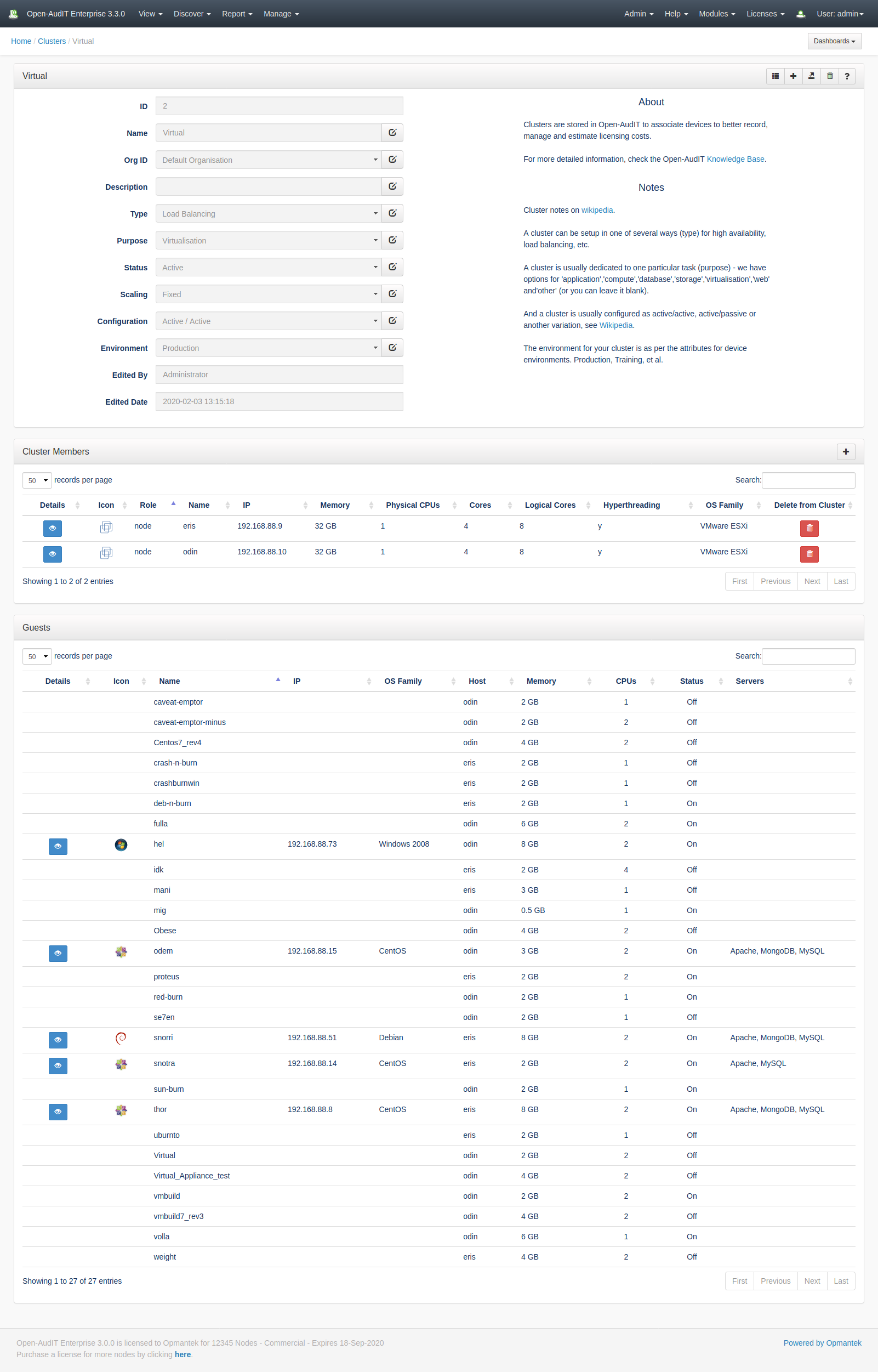Introduction
With the 3.3.0 release of Open-AudIT we have introduced the concept of a Cluster. This intuitively maps to the idea of a web, database, file (or one of several other purposes) cluster in a given type (high availability, redundancy, scaling, etc).
Depending on the purpose of cluster chosen, the reporting will be slightly different.
For example, if you create a Cluster with a purpose of virtualisation, when you have added devices to it you will also see the virtual machines on those devices. An example is below.
Clusters are just another collection, like any other. An entry for them in Roles-Permissions has been created. You can Create, Read, Update and Delete them using the API like any other collection.
In the future we hope to be able to automatically detect Microsoft SQL and File clusters along with ESXi clusters.
Database Schema
The database schema can be found in the application is the user has database::read permission by going to menu: Admin -> Database -> List Tables, then clicking on the details button for the table.
API / Web Access
You can access the collection using the normal Open-AudIT JSON based API. Just like any other collection. Please see The Open-AudIT API documentation for further details.
